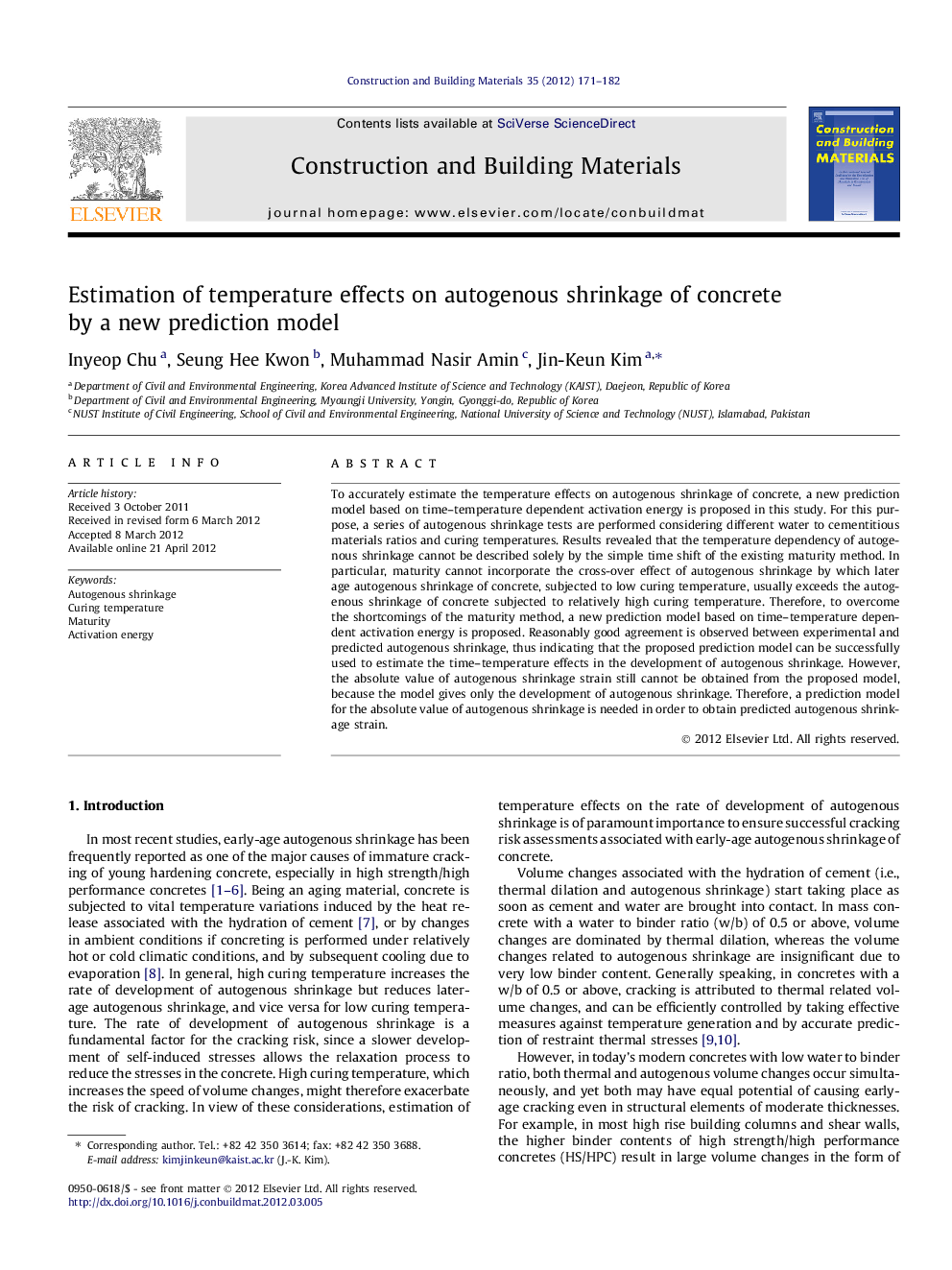| کد مقاله | کد نشریه | سال انتشار | مقاله انگلیسی | نسخه تمام متن |
|---|---|---|---|---|
| 258835 | 503624 | 2012 | 12 صفحه PDF | دانلود رایگان |

To accurately estimate the temperature effects on autogenous shrinkage of concrete, a new prediction model based on time–temperature dependent activation energy is proposed in this study. For this purpose, a series of autogenous shrinkage tests are performed considering different water to cementitious materials ratios and curing temperatures. Results revealed that the temperature dependency of autogenous shrinkage cannot be described solely by the simple time shift of the existing maturity method. In particular, maturity cannot incorporate the cross-over effect of autogenous shrinkage by which later age autogenous shrinkage of concrete, subjected to low curing temperature, usually exceeds the autogenous shrinkage of concrete subjected to relatively high curing temperature. Therefore, to overcome the shortcomings of the maturity method, a new prediction model based on time–temperature dependent activation energy is proposed. Reasonably good agreement is observed between experimental and predicted autogenous shrinkage, thus indicating that the proposed prediction model can be successfully used to estimate the time–temperature effects in the development of autogenous shrinkage. However, the absolute value of autogenous shrinkage strain still cannot be obtained from the proposed model, because the model gives only the development of autogenous shrinkage. Therefore, a prediction model for the absolute value of autogenous shrinkage is needed in order to obtain predicted autogenous shrinkage strain.
► We proposed a new model for prediction of autogenous shrinkage in concrete.
► The proposed model is based on time–temperature dependent activation energy.
► Good agreement is observed between experimental and predicted autogenous shrinkage.
► The proposed model can be successfully used to estimate the autogenous shrinkage.
Journal: Construction and Building Materials - Volume 35, October 2012, Pages 171–182